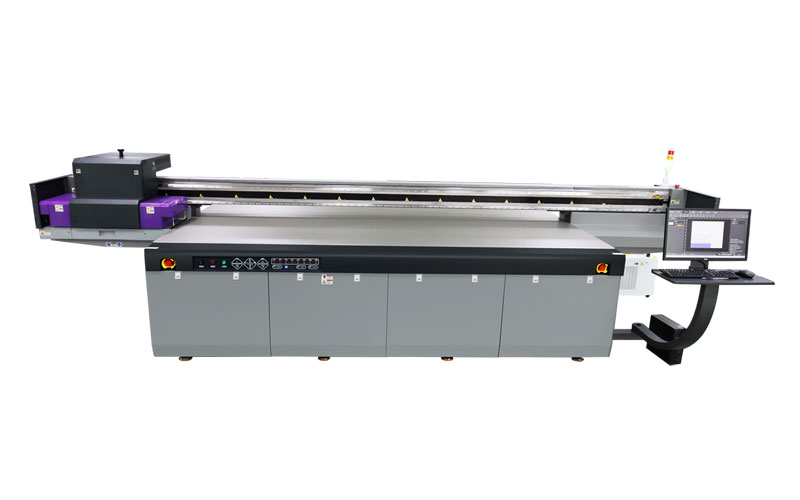UV Flatbed Printer: Choosing the Right Ink for Your Needs
UV Flatbed Printer: Choosing the Right Ink for Your Needs
In the realm of digital printing, UV flatbed printers have revolutionized the way we produce high-quality, vibrant prints on a wide array of materials. These versatile machines can print directly onto substrates such as glass, metal, plastic, wood, and even fabric, making them a popular choice for businesses in the signage, décor, and industrial printing sectors. However, the success of any UV flatbed printing project largely depends on selecting the right ink for your specific needs. This article delves into the intricacies of UV inks, exploring their types, properties, and how to choose the perfect ink for your UV flatbed printer.

Understanding UV Inks
UV inks, also known as ultraviolet-curable inks, are specially formulated to cure or dry instantly when exposed to UV light. This rapid curing process allows for immediate handling and stacking of printed materials, reducing the risk of smudging or damage. UV inks offer several advantages over traditional solvent or aqueous inks, including superior durability, resistance to fading, and the ability to print on non-porous surfaces.
Types of UV Inks
UV inks come in various formulations, each tailored to specific applications and substrates. The main types include:
Rigid UV Inks: Designed for printing on hard, non-flexible surfaces such as glass, metal, and acrylic. These inks provide excellent adhesion and durability.
Flex UV Inks: Suitable for flexible materials like vinyl, polyester, and certain types of plastic. Flex inks ensure prints remain intact and vibrant even when the substrate is bent or stretched.
Hybrid UV Inks: Offer a balance between rigid and flex properties, allowing for printing on a wide range of materials, including some that are semi-rigid or have unique textures.
Specialty UV Inks: Include white ink for opaque printing on transparent materials, varnishes for added texture or gloss effects, and even inks with special properties like conductivity or fluorescence.
Key Properties of UV Inks
When selecting UV ink for your flatbed printer, consider the following properties:
Curing Speed: The time it takes for the ink to fully cure under UV light. Faster curing speeds enhance productivity but may require more powerful UV lamps.
Adhesion: The ink’s ability to bond securely to the substrate, ensuring long-lasting prints.
Durability: Resistance to scratching, fading, and chemicals, crucial for outdoor or high-wear applications.
Color Gamut: The range of colors the ink can produce, important for achieving accurate and vibrant prints.
Flexibility: How well the ink can stretch or bend without cracking or losing color, especially important for flex and hybrid inks.
Factors to Consider When Choosing UV Ink
Selecting the right UV ink involves evaluating your specific printing needs, including:
Substrate Compatibility: Ensure the ink is compatible with the material you intend to print on. Manufacturer specifications often outline which inks work best with each substrate.
Print Quality Requirements: Consider the desired print resolution, color accuracy, and detail. High-end graphics may require premium inks with a broader color gamut.
Environmental Conditions: For outdoor applications, choose inks with high resistance to UV rays, moisture, and temperature changes to prevent fading or degradation.
Production Volume and Speed: Larger production volumes may necessitate inks with faster curing times to maintain efficiency.
Regulatory Compliance: Ensure the ink meets industry standards and regulations, especially if your prints will be used in food packaging or children’s products.
Cost: While quality is paramount, consider the cost per liter and how it aligns with your budget and profit margins.
Testing and Experimentation
Before committing to a specific UV ink, conduct thorough testing on your UV flatbed printer and target substrates. This process should include:
Print Samples: Produce test prints to assess color accuracy, adhesion, and overall print quality.
Durability Tests: Subject printed samples to conditions they’ll encounter in real-world applications, such as exposure to sunlight, water, or abrasion.
Consult Manufacturer: Seek guidance from your printer and ink manufacturer for recommended ink types based on your unique requirements.
Conclusion
Choosing the right UV ink for your UV flatbed printer is a multifaceted decision that significantly impacts print quality, durability, and ultimately, customer satisfaction. By understanding the properties of different UV inks, considering your specific printing needs, and conducting thorough testing, you can ensure that your prints not only meet but exceed expectations. As technology continues to advance, staying informed about the latest ink innovations will further empower you to make the most suitable choices for your business, driving growth and success in the dynamic digital printing industry.
